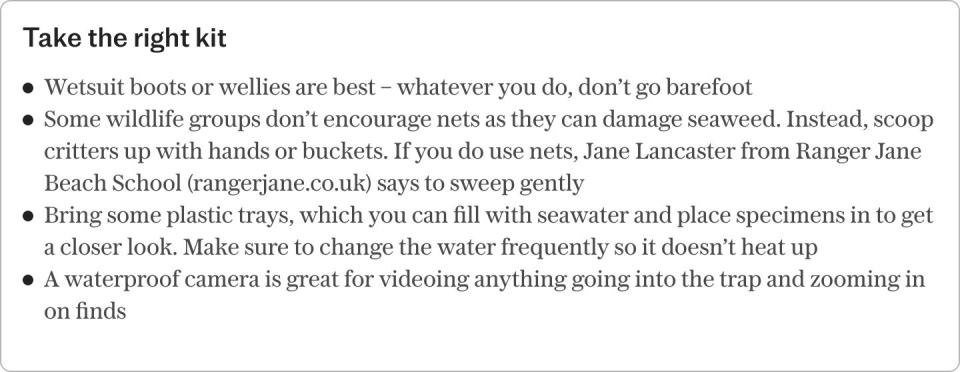Rumour has it there’s more glorious sunshine to come – but whatever the weather, head to a British beach at low tide and you’re likely to see people hopping around with nets, peering into puddles. Just barely enough to reflect the sky and yet strangely alive, our rock pools are like mini aquariums, offering a glimpse into an underwater world we can’t normally visit – and poking around in them is a time-honoured British tradition.
“We’ve been obsessed with rock pools since Victorian times,” explains Matt Slater of the Cornwall Wildlife Trust (cornwallwildlifetrust.org.uk). “The Victorians were foragers, raiding pools and bringing things back to observe and cherish. That fascination continues today.”
It’s a great way to spend a few hours – or a whole day – and educational too. Whether you’ve got a trip to the British seaside planned for this summer, or are spontaneously running to the nearest shore on a sunny Saturday, here’s how to make the most of our remarkable rock pools.
Must know
Where can you rock pool?
Don’t limit yourself to sandy, touristy beaches. “Some of the best places to rockpool are on the more sheltered parts of the coastline,” says Matt. “There’s less variety of life on exposed, surf-strewn beaches. Go to flat, rocky promontories where there are pools or areas of boulders you can pull up to find creatures underneath. Estuaries are fascinating too, but be careful of muddy areas.”
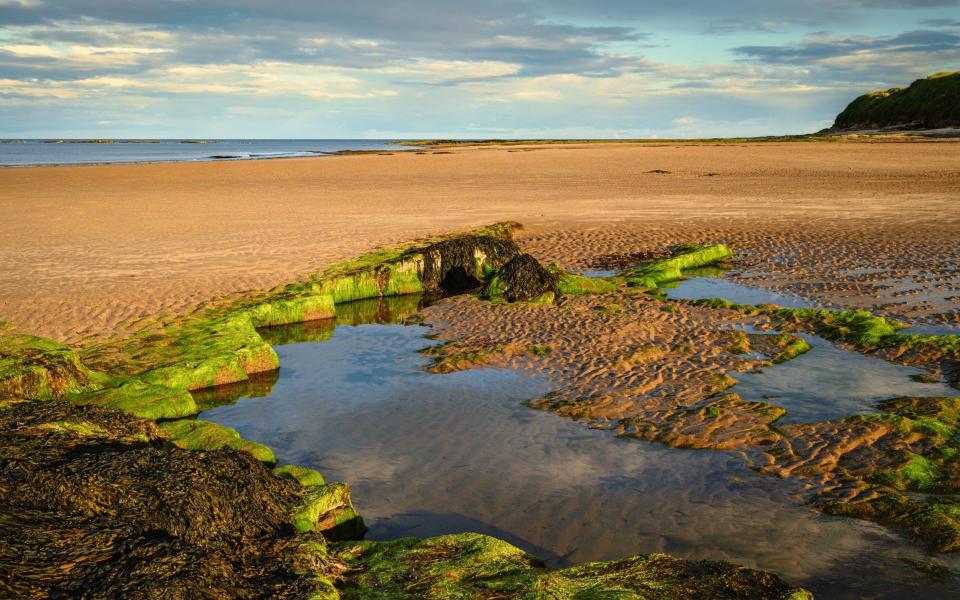
When can you go rock pooling?
Our coastlines are rich with life all year round, but rock pools are particularly good during the high tides of spring and autumn. Between March and April and September and October you can reach parts of the coastline that would normally be underwater. Spring is particularly good, when seaweed shows new growth and stunning colours. That said, nothing beats a day of splashing in the shallows and exploring rock pools under the glorious summer sun.
Who is rock pooling suitable for?
Some beaches are more accessible than others, so research parking options, flat routes and walking distances before you set off. Rockpooling is generally great for families, but be aware that, as Matt says, “a lot of the animals are quite tough – but if you’re careful, you can put a lot of them in a bucket, watch them and release them safely.”
What is the best time to look for rock pools?
Always check the tides in advance to ensure you have safe access to the shore. Matt plans his visits before low tide so that the tide is out while he is searching for rock pools and there is no rush to get back before the tide is in.
How do you stay safe?
Rocks can be very slippery, covered in thin layers of algae. Hold hands and take small, slow steps, try to avoid the slipperiest bits of seaweed and stick to areas where barnacles and mussels are. Remember that crabs can pinch and weevers can sting, but the latter are usually buried in the sand.
What not to do
Don’t poke the critters (and make sure little ones understand this). Don’t scrape things off rocks or replace upturned rocks and seaweed. “You’re like a giant picking up a house and turning it upside down,” Matt explains. When picking up crabs, place your thumb and index finger on either side of the shell, just below the base of the pincers, and lift them up. Also, don’t put crabs together in buckets, as they can fight, and sea anemones have stings that can harm fish.
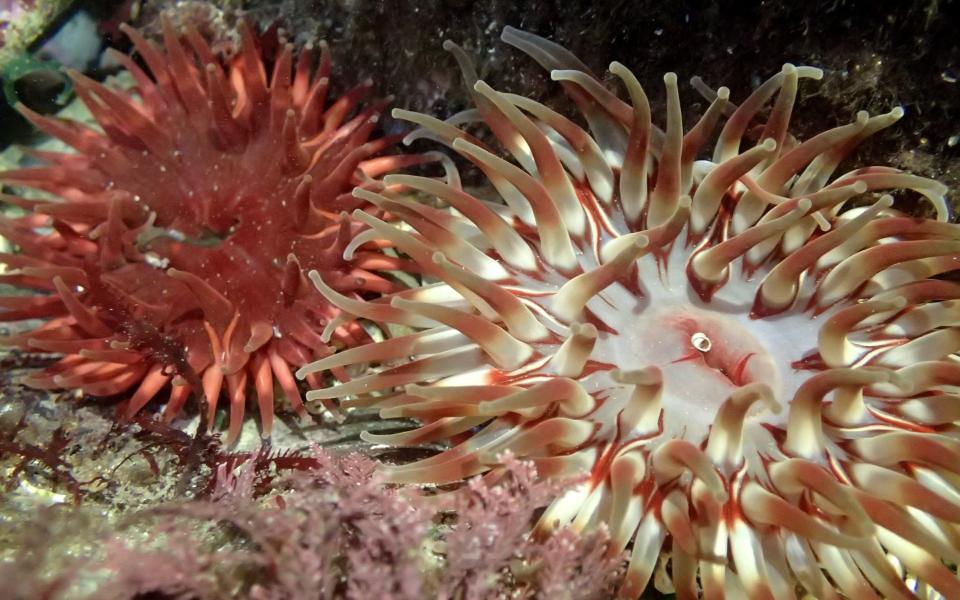

What you might find
Limpets; several species of hermit crabs; common starfish (which love mussel beds – don’t pick them up or they may lose a leg); shannies (slimy fish with large heads that survive out of the water at low tide); and mussel-sucking dogfish.
Rare species?
As the sea warms, less common species are found. For example, the St Piran hermit crab, which has white spotted eyes on red stalks, has returned to the south-west. The Montagu crab is now abundant in Cornwall and is spreading along the coast. They have thick claws which they wave when irritated.
What to do with what you’ve learned
Upload your photos to an online group that records wildlife sightings, such as Cornwall Wildlife Trust’s ORKS app (erccis.org.uk). “It’s really useful for long-term monitoring,” says Matt. You could also volunteer for a shoresearch survey with Wildlife Trusts (wildlifetrusts.org) to study pollution, climate change and invasive alien species.
Where to do
Sea Houses, Northumberland
This long, golden beach, backed by dunes, has parking and views of Farne Island Lighthouse. On a coastal safari with Crabtree & Crabtree (crabtreeandcrabtree.com), Jane from Ranger Jane Beach School showed me a long-spined scorpionfish, shanny, hermit crabs, shore crabs and the ruby jewel of a sea anemone. Jane also regularly spots butterfish, starfish, sticklebacks, sea hares (actually snails) and crinoids (yellow snails).
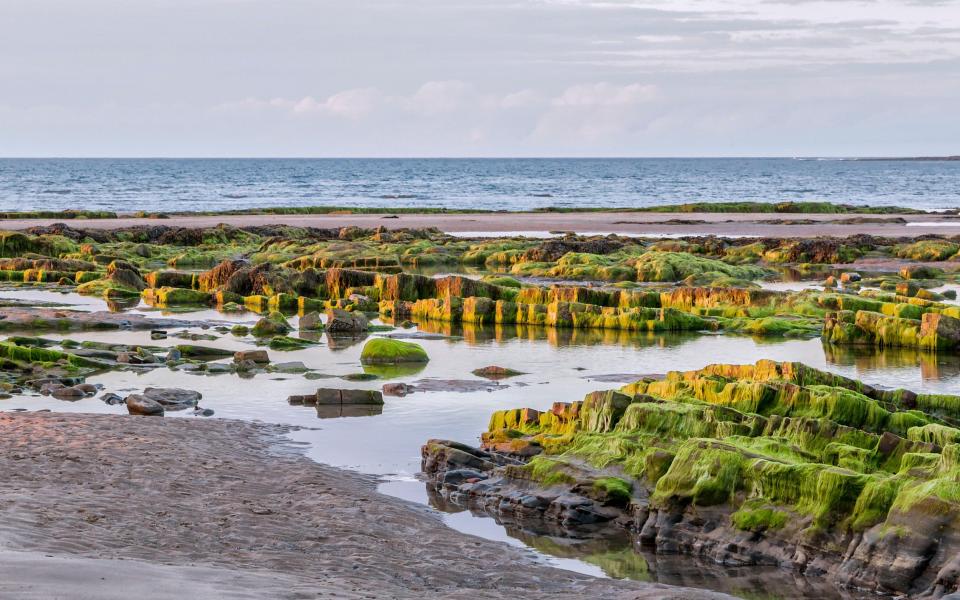

Stay: Gardener’s Cottage (01573 226711; crabtreeandcrabtree.com) at Twizell Estate, sleeping up to six people, from £654 for three nights.
My Head, Somerset
Mandy Wallington of the Somerset Wildlife Trust (somersetwildlife.org) says Minehead is particularly good for rock pools because it is part pebble and part sand. The best pools are by the harbour and are accessible to very young children. “Typical finds include shore crabs, top clams, periwinkles, whelks and chitons (molluscs with shells similar to woodlice),” she says. For a chance to see baked bean sea squirts, head further west to Gore Point.
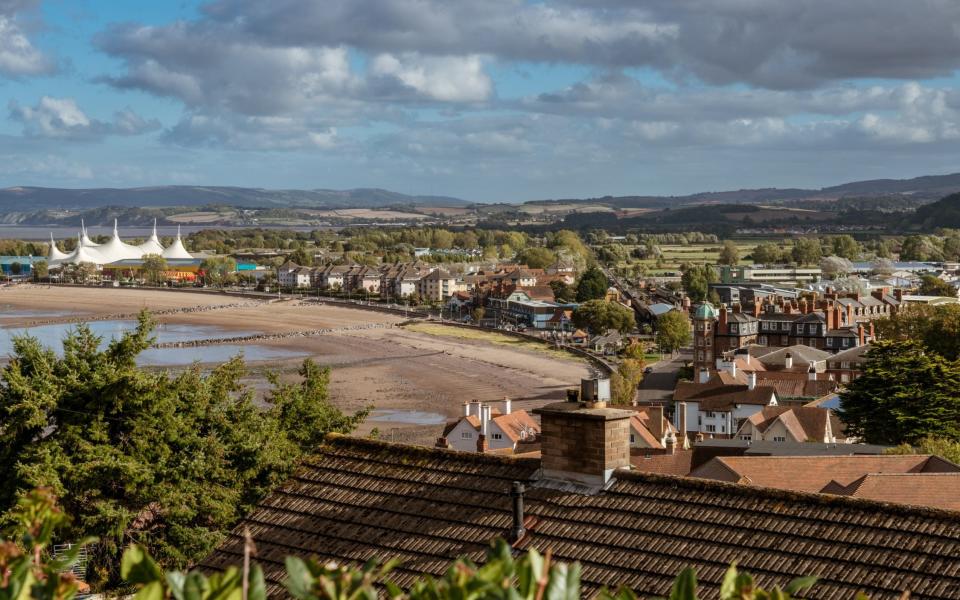

Stay: Foxes Hotel (01643 704450; foxeshotel.co.uk) has double rooms from £90 per night, including breakfast.
Trevaunance Cove, St Agnes, Cornwall
This sandy beach is backed by cliffs, with sea caves and pools to explore between rocky outcrops. Search overhangs and gullies for breadcrumb sponges (hello SpongeBob) and star sea squirts. Fish include Cornish sucker fish (with mouths like duck bills), shannies and barbed-faced rocklings. Afterwards, pull up a stool for prawn tacos at Schooners (01872 553149) café, which overlooks the waves.
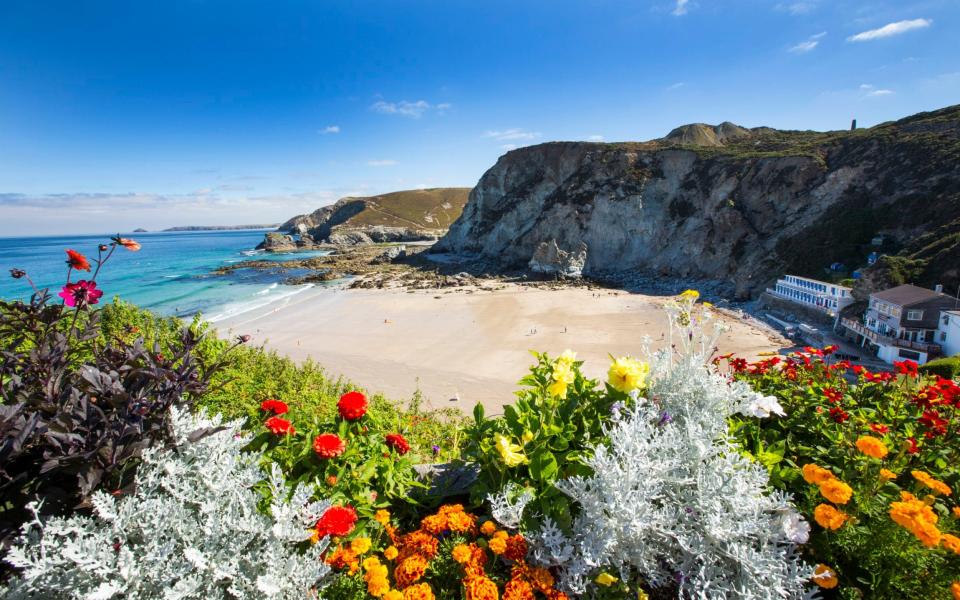

Stay: Beacon Country House Hotel (01872 552318; beaconhotel.co.uk) has double rooms from £125 per night, including breakfast.
South Landing, Flamborough, Yorkshire
Below the cliffs, rock pools in the South Landing Nature Reserve can be reached by descending 75 steep steps to a limestone beach. At low tide, you can see the line of what was probably a medieval harbour, as well as a kelp forest. Look for dog-eating wrasses, winkles, starfish, crabs and boreholes in the soft pebbles. The Living Seas Centre (ywt.org.uk) runs group safaris.
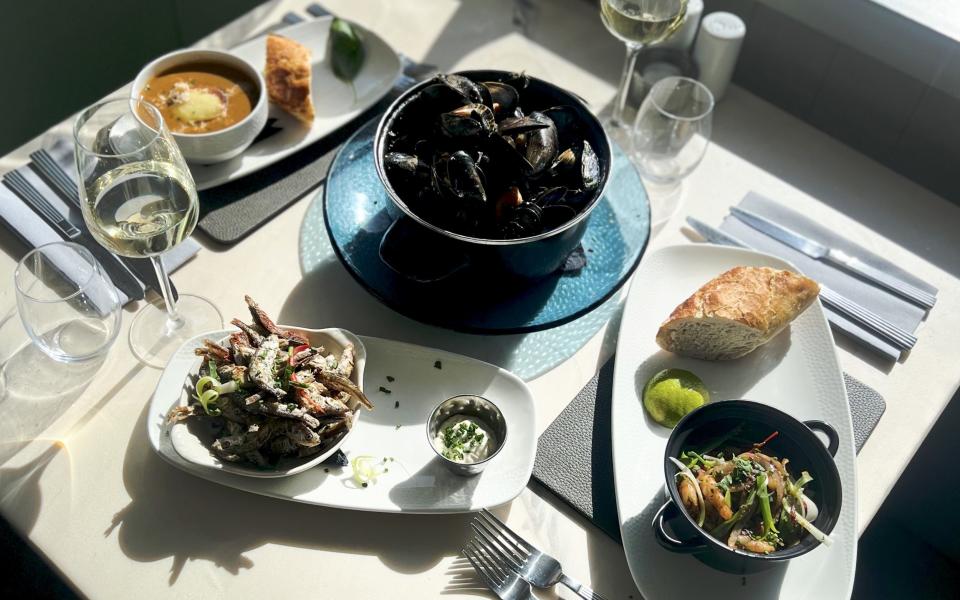

Stay: Salt on the Harbour (01262 606040; harrisonleisure.com) has double rooms from £135 per night, including breakfast.
Wembury Beach, Devon
With the sea washing up huge wave-cut platforms, Wembury has many excellent rock pools. Look out for cute little cushion starfish, larger spiny starfish, red-eyed velvet crabs, limpets, anemones and pipefish (a relative of the seahorse). Wembury Marine Centre (wemburymarinecentre.org) runs rock pool walks or don a mask and try a snorkelling safari.
Stay: Rose and crownYealmpton (01752 880223) has double rooms from £105 per night, including breakfast.
